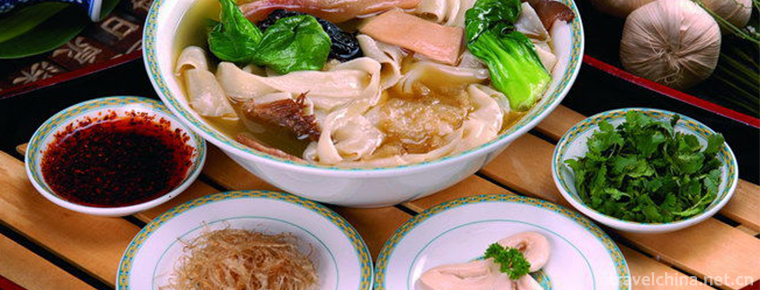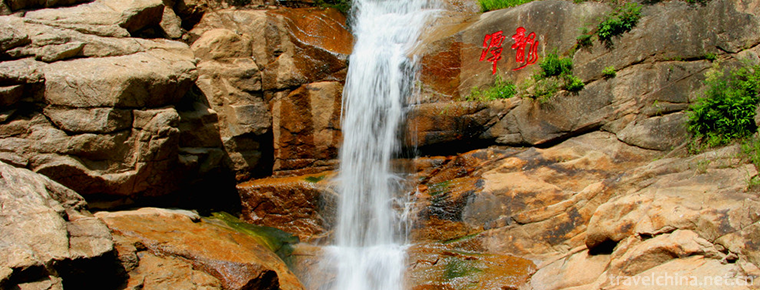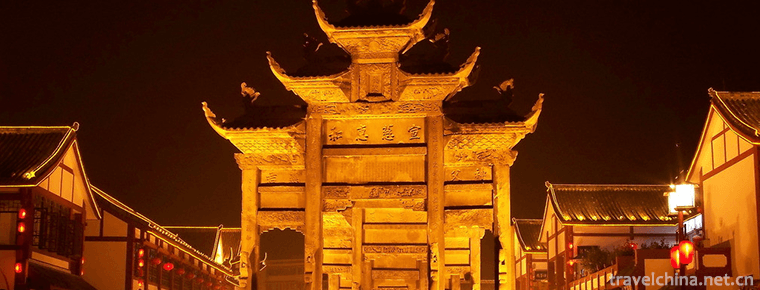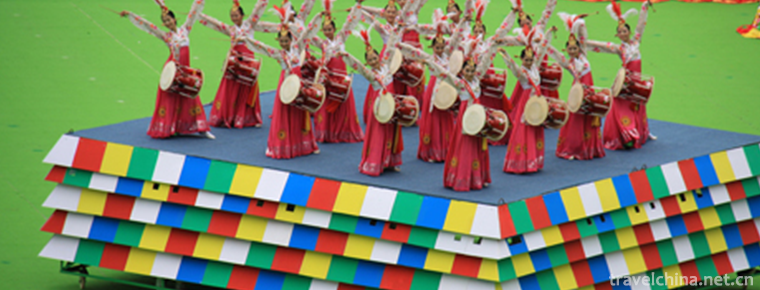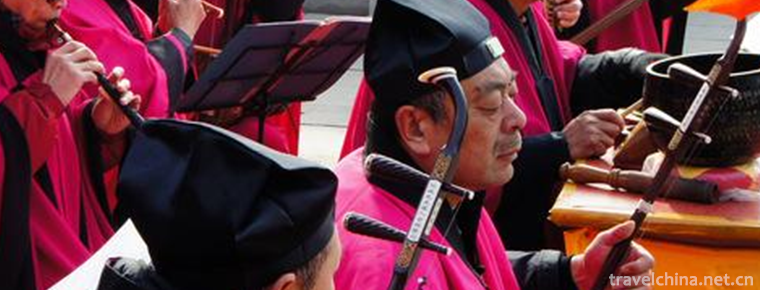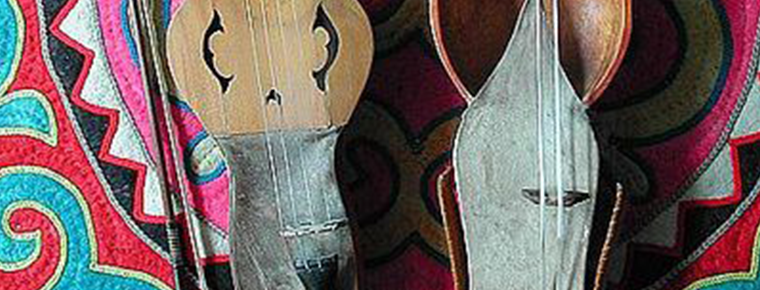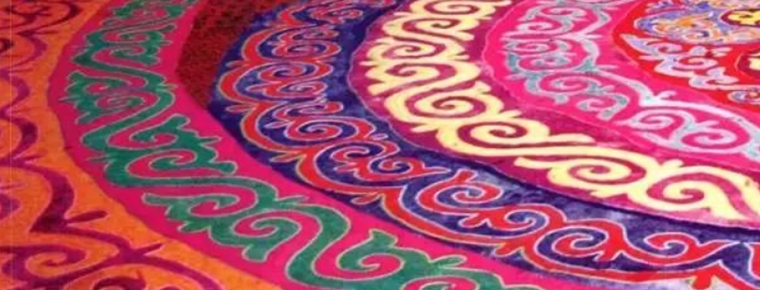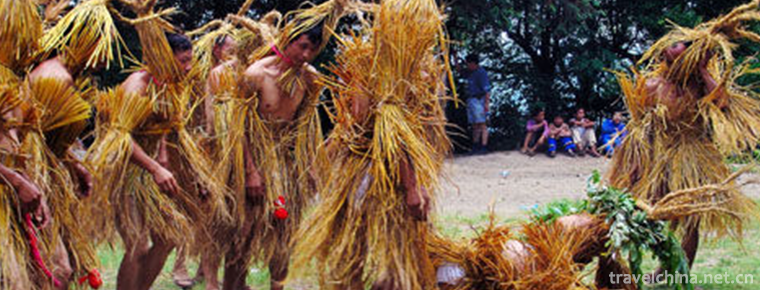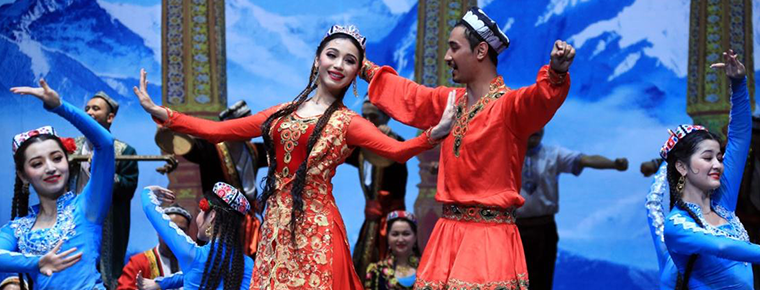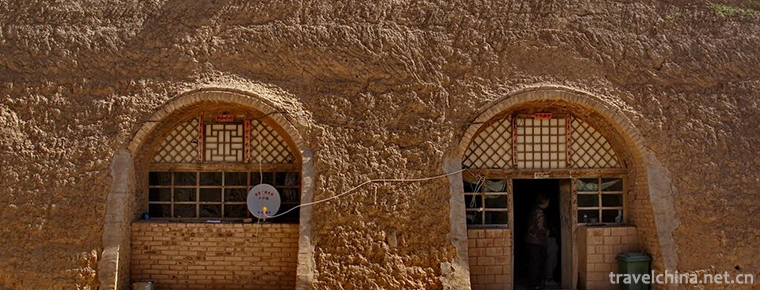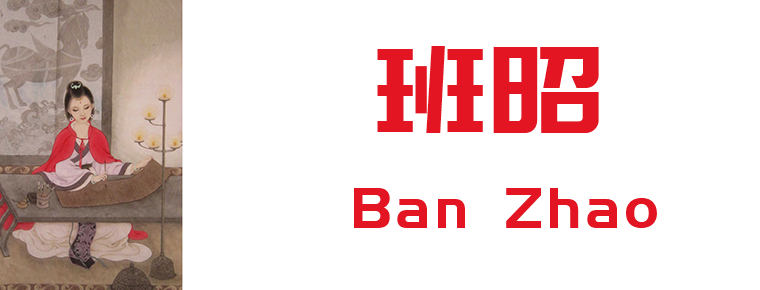Leting drum
Leting drum
Music Pavilion Drum is a representative form of traditional music drum book and drum music in northern China. It is widely spread in eastern Hebei, Beijing, Tianjin and northeastern Liaoning, Jilin, Heilongjiang and other places. During the performance, one person was standing and singing on the drum board, while others were accompanied by three strings and other instruments. Legend has it that around 1850, Leting Drum was founded by Wen Rong in Leting County, Hebei Province. It was once called "Three Flowers of Folk Art in Eastern Hebei" together with opera critics and Tangshan Shadow Pictures. Since its formation, celebrities have sprung up, spread widely, and have a deeper mass base and cultural heritage. It is a national intangible cultural heritage.
On May 20, 2006, the opera was approved by the State Council and listed in the first batch of national intangible cultural heritage list.
representative figure
Besides Wen Rong, their descendants Chen Jichang, Qizhen (Qizhen), Feng Fuchang, Wang Enhong, Wang Deyou, Qi Yongwu, Qi Wenfeng, Han Xiangpu, Jin Wenran, Zhang Yunxia, Jia Youran and Yao Shunyue are the representative artists of various historical periods, among which Han Xiangpu and Jin Wenran are the most famous, and their respective arts are respected as "Han Xiangpu" and "Jin Wenran" respectively.“ Jin (Wenran) School.
historical origin
In the early Qing Dynasty, people who enjoyed themselves in Yueting preferred to sing "Qingping Song" and Sanqu tunes were also popular in the countryside. Later, "Qingping Song" was accompanied by three strings, which was quite different from the old tunes and was called "Musical Pavilion Tune". Later, drums and boards were added to accompaniment, and the singing form was changed from "singing without speaking" to "singing with speaking". About the fifth year of Jiaqing in Qing Dynasty, the Yue Ting Tune formed the "Yue Ting Da Gu".
In Daoguang 30 years, Wen Rong, a drum artist, changed the wooden board into two pieces of iron boards, called "pear flower boards" (homophonic sound of plough board). At first, pear flower boards were made by grinding the tip of plough boards to intercept farm implements. They were shaped like half a month, clamped between fingers, and tinkled bells, dumb, or put, or single, or double, adding flowers and changing their mood lightly. Artists use them all, so they are popular. Wen Rong was called "Wen Tie Ban".
Later disciples worshipped him as a teacher, and Wen Rongsui unified many artists of various schools. And Zongpu is called "Qingmen", whose artists are called "disciples of Qingyin", which can be divided into ten generations: Jade, Moon, De, Lai, Xue, Wen, Zhi and Hua Feikai, so Yueting is the only one in Qingmen. Once, Cui Youwen, the head of Huangliangzhuang in Leting County, went to Beijing to worship it. He brought Wenrong and the emperor to perform. He was greatly appreciated and awarded the title of "top man" and was named "big drum of Leting County". The singing tunes and tunes are absorbed from the beautiful singing tunes of shadow play, Peking Opera and other kinds of music, forming a fixed tune - "Nine tunes and Eighteen tunes".
In the rhythm of rap and singing, fourteen slate and three-character sentences, five-character sentences, six-character sentences, seven-character sentences, eight-character sentences, cross sentences and even tens of-character anamorphic sentences were created: slow, slow, tight, fast, scattered, red, black flying, takeoff and landing, receiving, retaining, turning and counting. During the Jiaqing period of the Qing Dynasty, the Yuting Drum began to spread in Feichangli, Luanxian County, and then moved to Qian'an, Horizon (Lulong) and Yuguan. With the increasing number of operators going to the northeast, the big drums of the Music Pavilion also spread to the northeast.
Guangxu four years ago, according to the "Laojuntang Jianghu ancestor monument" outside the Tianxiao East Gate, there has been a long-standing name of the musical drum artist Yang; Wenrong disciple Chen Fengsheng first rushed to the northeast, Guangxu died of illness in Shuangcheng County, Heilongjiang Province in 17 years.
In the six years of the Republic of China, Hu Shaolan, an artist, opened up a performance venue for drums and drums in Tangshan, then expanded to Hangu, and later crowded into Tianjin and Beijing. In the mid-period of the Republic of China, Leting Dagu formed two main schools: the East Road School, represented by Han Xiangpu. Its voice is mellow, melodious, gentle and delicate. It pays attention to clear rhythm and pure pronunciation. Its tune requires strict specifications, and it is never harmful to songs or inflections of words. The West Road School is represented by Jin Wenran. Its voice is rough, good at controlling voice, re-orifice, breath, clever use of nasal sound; Run the cavity with words, strive to correct the words, fluent and natural. The repetition is full of voice and emotion. Leting Dagu Bibliography is very rich, about 176.
Among them, there are 31 long books such as Yang Jia Jiang, Sui and Tang Dynasty Romance, Hujia Jiang, Yue Fei Zhuan, Baogong Case and Three Swords; 17 middle books such as Hui Cup Ji, Wagang Zhai, Huyanqing Dazhao, Peng, Shangfen, etc. and 17 passages such as Luhua Dang, Shuangchaoshan, Bai Snake Biographies Yutangchun, Xixiang Ji and Butterfly Dream. There are 107 books such as "Sifu Wang Erjie", "Snow in June", "Xiaoguxian". There are 12 books such as "Rat Wrestling", "Old Money Fan", "Tongue Twisting" and "Present Times".
Leting drum is one of the main traditional music in northern China. It originated in Leting County and is popular in Beijing, Tianjin, Eastern Hebei and the vast areas of Northeast China. Leting drum is the product of the times of history and culture and the inevitable result of the development of rap art. The emergence of Yue Ting Da Gu is based on the inheritance of many traditional ancient rap arts, and gradually developed and matured through long-term singing practice. According to records, the maturity of Leting drums should be developed and matured on the basis of the essence of Leting folk and folk songs in the middle and late Ming Dynasty. Legend has it that people around the Music Pavilion are good at singing and dancing. On New Year's Day, they hold mass singing and dancing activities and rap activities. At the same time, the Yueting dialect itself has natural melody, the vocal characters are singing, and the finals are slender and slender. Therefore, listening to the music booth accent from other places, they all feel like singing. If the voice is slightly lengthened, combined with drum board, and sublimated, it can become a beautiful melody with local flavor. Music Pavilion Drum is gradually developed on this basis.
The famous brand of Music Pavilion and Drum has its accidental origin. After the establishment of the Qing Dynasty, the flag people began to divide up land. Cui Youwen's predecessors, who were enfeoffed in Leting County, took root and were called "the first imperial villa in the east of Beijing". After Cui Youwen took his brother as the first prize, he made the Cui family richer and more powerful. He could go straight to five governments and six ministries and make friends with the Royal relatives. Cui Jia loves folk art very much. He not only organized shadow clubs, Bangzi clubs, lotus drop-off clubs, but also many big drum artists sang in Cui Jia. The Cui family also supports these people all the year round. Once, Cui Youwen went to Beijing to pay tribute, and brought the big drum artists to Prince Gong's palace to present their art. The artists'skills were greatly rejoiced by Wang Ye, and the name of "Yue Ting Da Gu" was established. This name has been used to this day. This is the origin of the name of the Music Pavilion Drum.
Inheritance significance
Development situation
In the 1980s, Tangshan Quyi Troupe was dissolved. The development of Leting drum art has stagnated. Since the implementation of the intangible cultural heritage protection project in our country, it has injected new vitality into the development of the art of Leting Drum. In 2006, Leting Dagu was identified as the first national intangible cultural heritage protection project. Tangshan City has established the National Folk Culture Protection Center. The municipal and county finance allocates special funds every year for the protection of ethnic and folk cultures. In 2007, He Jianchun and Zhang Jinping, the performers of Leting Big Drum, were selected as the representative successors of the second batch of intangible cultural heritage projects in China. In order to protect, inherit and carry forward the art of musical Pavilion and drum, the rap Hall of musical Pavilion and drum was built in the county cultural center, the music Pavilion and drum music score was compiled, and the protection plan of musical Pavilion and drum art was formulated. It is clear that the county financial investment will encourage the artists of Leting Drum to recruit trainees and train their descendants. Nowadays, under the guidance of the national intangible cultural heritage protection policy, the art of Leting and Dagu has entered a new journey of prosperity and development. (Source: Cultural Communication Network) Hebei Quyu. In the early Qing Dynasty, a kind of "Qingping Song" was circulated in Leting County, Hebei Province, and many people liked singing. Later, the artist string Li accompanied by three strings to innovate the rhythm, known as the "Music Pavilion Tune". In singing, after improvement and improvement, the number of drums and wooden festivals was increased, gradually breaking away from the form of folk songs, and developing into the art of rap. Around the fifth year of Jiaqing (1800), the musical form of musical pavilions and drums was initially formed. Around 1850, artist Wen Rong changed to iron plate festival, standardized the singing style and accompaniment music, and continued to enrich the singing style through his disciples Qizhen, Chen Jichang, etc., which further improved the singing art of the musical Pavilion drum, and was known as "Nine-tune and Eighteen-tune". Around 1900, celebrities such as Qi Dewang and Qi Yongwu in Luanxian and Luannan made some reforms combining their own characteristics, thus forming a school with novel style. From then on, the Yueting Drum was divided into two singing systems: the East Road (popular in Yueting County) and the West Road (popular in Luan County and Tangshan area). After the founding of the People's Republic of China, two main schools of art were formed, namely, Han Xiangpu School on the East Road and Jin Wenran School on the West Road. Among them, Jin School is full of innovative spirit, euphemistic melody, and has made important contributions to the development of the Music Pavilion and Drum.
Music Pavilion Drum is deeply loved by the masses in the northern region because of its rich board cavity, complete musical form and distinct local characteristics. In 1950, the Dagu Music Team was set up in Leting County, which made the artists of the Dagu Music Team have their own organizations recognized by the government for the first time. And with the support of the government, it has continuously trained a large number of big drum talents. Up to now, there are still big drum music teams in Leting County, and the people of Leting still like big drums.
The state attaches great importance to the protection of intangible cultural heritage. On May 20, 2006, the opera was approved by the State Council and listed in the first batch of national intangible cultural heritage list.
In May 2006, one of the "Three Flowers in Eastern Hebei" in China and foreign countries was listed as the first batch of National Intangible Cultural Heritage Representative works. The protection and inheritance of the drum are facing opportunities and challenges.
Music Pavilion and Drum is one of the main music types in North China, which is spread in Beijing, Tianjin, Hebei and the vast areas of Northeast China. In the late Ming and early Qing Dynasty, the folk minor "Qingping Song" originated in Leting County, Hebei Province, experienced repeated practices of several generations of artists, learned the advantages of various traditional rap arts, absorbed some tunes of local folk songs and operas, and gradually formed a unique rap art with singing tunes and slats. At that time, Prince Gong gave the name "Yuting Dagu", which has continued to this day.
Leting drum melody beautiful, unique charm, melting in the localization, tend to dramatize, known as "nine tunes and eighteen tunes". There are many titles of Yue Ting Dagu Ci, which have a high literariness and profound ideological quality. They are very valuable materials for the study of the history of social civilization, social development, folk culture and music development in China. They have exerted a profound influence on the formation and development of sister arts such as Beijing Qinshu, Northeast Dagu and Tang Opera. Their entries have been included in the Encyclopedia of China and successively in the Encyclopedia of China.《 Chinese Quyi Zhi and so on, the famous repertoire "Yinhong" was listed as the national folk music textbook by the former Shenyang Music College.
Since the 1980s, along with the reform and opening up and the development of market economy, the social foundation on which Leting Dagu relies for its survival and development has changed. The performance market has been depressed, the activity position has been gradually narrowed, the performance income of Dagu artists has been low, and some accomplished artists have gradually withdrew from the stage because of their old age, or died successively. It is difficult to inherit the skills accumulated for a lifetime. It is difficult for light artists to be unique, and the inheritance and development of the music Pavilion and drum show the crisis of dynasties. Leting County insists on both legal and scientific protection, lays equal stress on research, protection, development and utilization, actively explores new ways to promote national and folk culture and promote economic and social development, and strives to solve some existing problems such as weakening awareness of cultural heritage protection, weak strength and the initial emergence of crisis of succession, breaking the boundary between regional closure and sectarian disputes, and ranking intangible cultural heritage protection. For the long-term development strategy of national and specific regional culture. To set up an open and unified leading and professional organization for the protection of cultural heritage. Mobilize the initiative of origin and inheritance to form a strong atmosphere of protection and inheritance. In the next 2 to 3 years, we will establish a unique, authoritative and first-class physical Exhibition Center and data base for the Music Pavilion and Drum in China.
With the changing orientation of mass art appreciation, Leting County has set up "Leting County Quyi Troupe" and "Xiangpu Art Troupe", focusing on training new rap artists. In terms of content and form, it breaks through the limitation of re-creation relying on ancient and modern literary works, innovates and develops many forms such as counterpart drums, group drums and situational drums, and more integrates into the content of real life. At the same time, a comprehensive literature survey has been carried out, artists'archives and the Music Pavilion Drum Exhibition Hall have been established, and monographs such as "Music Pavilion Drum" and "Music Pavilion Drum Book Collection" have been published successively.
At the same time, we should strengthen the construction of the two groups. The rescue and protection of the traditional skills of the existing inheritors will prevent people from dying out, and the training of future inheritors will be emphasized. Secondly, the construction of appreciation groups. Expanding the audiences'scope of origin and inheritance, and forming new appreciation areas and groups by radiation. In order to develop the contingent of inheritors, strengthen the professional art groups of Leting Dagu, actively implement the famous artists'fine works, break the restrictions of traditional regions and portals, introduce the competition mechanism, and widely absorb outstanding talents both inside and outside the county. Meanwhile, the key Leting Dagu artists are encouraged to carry out inheritance activities by means of naming, awarding titles, commending and rewarding, and subsidizing. Big drums follow.


-
Zhengzhou Xiao Ji stewed noodles
Zhengzhou Xiao Ji stewed noodles,Xiao Honghe, the founder of Xiao Ji Yanmian, was a master of Yifumian at Changchun State-owned Hotel in Zhengzhou. .
Views: 177 Time 2018-11-26 -
Longtan Ecotourism Resort
Lianzhou Longtan Eco-tourism Resort is a tourism project invested and constructed by Lianzhou Aidi Tourism Development Co., Ltd. of Qingyuan City. Based on the original Huangchuan .
Views: 141 Time 2019-01-19 -
Longchang Shipaifang Tourist Area
Located in Longchang City, Sichuan Province, China, Longchang Stone Memorial Architecture is a very important type of traditional Chinese architecture. It was rated as a class 4A tourist attraction by.
Views: 171 Time 2019-02-06 -
Korean Chief Inspiration
Long drum dance, also known as "stick drum dance", is a dance often danced by Chinese Korean people for self-entertainment and entertainment. Long drums have two sides.
Views: 138 Time 2019-04-16 -
Taoist Music
Taoist music is one of Chinese religious music. Taoist music is an indispensable part of Taoist rituals. It has the characteristics of foiling and rendering religious atmosphere, enhancing believers'y.
Views: 212 Time 2019-04-25 -
Kazakh Kubuzi
Kubuzi is the representative of Kazakh's playing instruments. Chinese is also translated into Hobbes, Hobbes, Kibbs and so on. Kubuzi structure is simple and beautiful, used for solo, ensemble or acco.
Views: 108 Time 2019-05-02 -
Weaving and Dyeing Techniques of Felt and Printed Fabric
Uygur felt, printing and dyeing technology, Xinjiang Uygur Autonomous Region Turpan (now Turpan) local traditional skills, one of the national intangible cultural heritage..
Views: 94 Time 2019-05-04 -
Lanzhou Taiping Drum
Lanzhou Taiping Drum, a traditional dance in Lanzhou City, Gansu Province, is one of the national intangible cultural heritage..
Views: 254 Time 2019-05-10 -
Maogus Dance of Tujia Nationality in Western Hunan
Maogus Dance of Tujia Nationality in Western Hunan Province, the traditional dance of Tujia and Miao Autonomous Prefecture in Western Hunan Province, is one of the national intangible cultural heritag.
Views: 175 Time 2019-07-06 -
Machirev
Machirev is a name for a form of dance and entertainment, which refers to a large-scale self-entertainment activity with a large number of participants (the so-called participation refers to those who.
Views: 96 Time 2019-07-06 -
Cave Building Techniques
Cave dwelling is an ancient dwelling form of residents on the Loess Plateau in Northwest China. The history of cave dwelling can be traced back to more than 4,000 years ago. The Chinese people creativ.
Views: 99 Time 2019-07-11 -
Ban Zhao
Ban Zhao (about 45 years - about 117 years), also known as Ji, the word Hui ban. Fufeng An Ling (now northeast of Xianyang, Shaanxi), a historian and a writer of Eastern Han Dynasty. historian Ban Bi .
Views: 287 Time 2019-09-11
